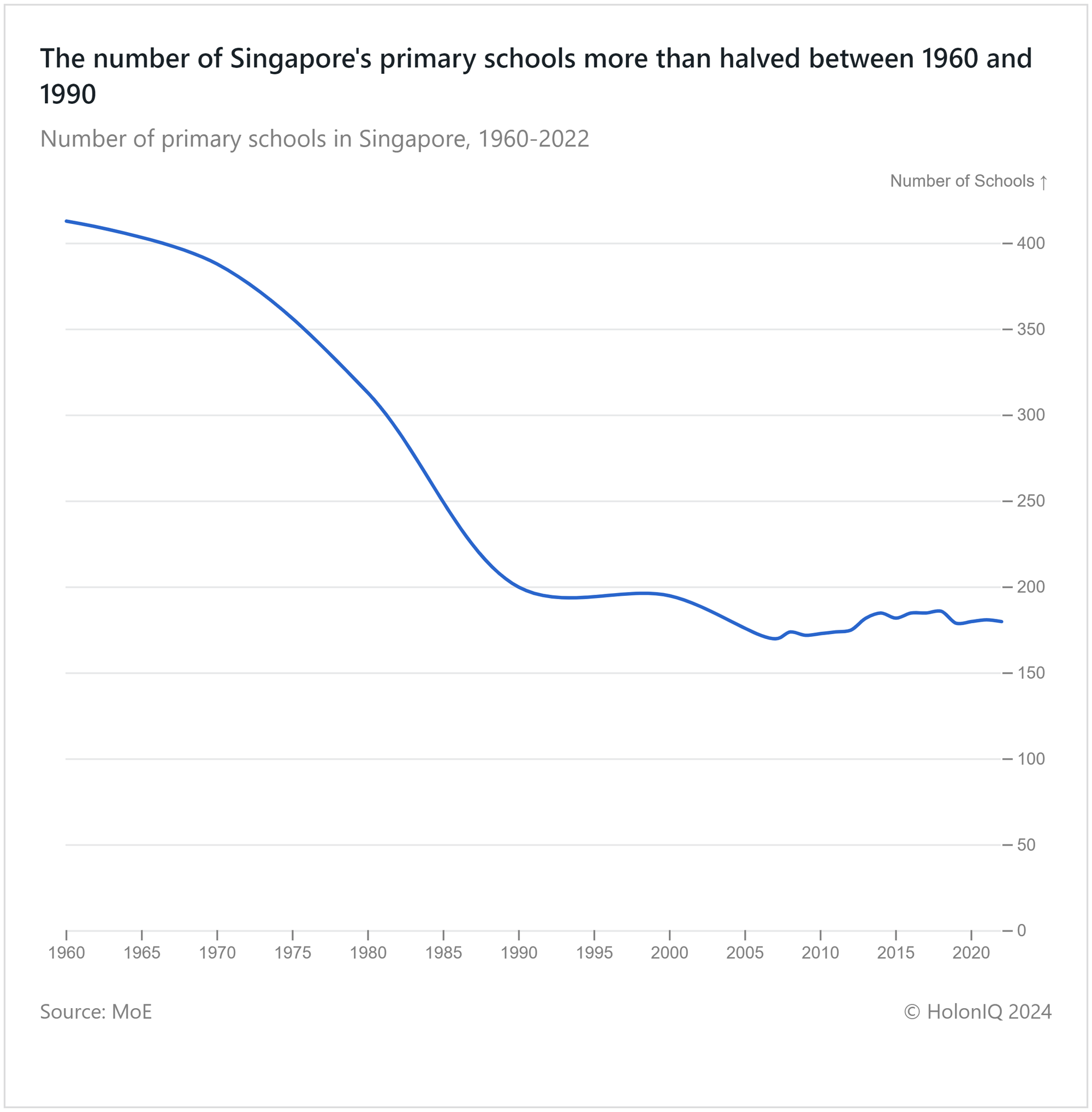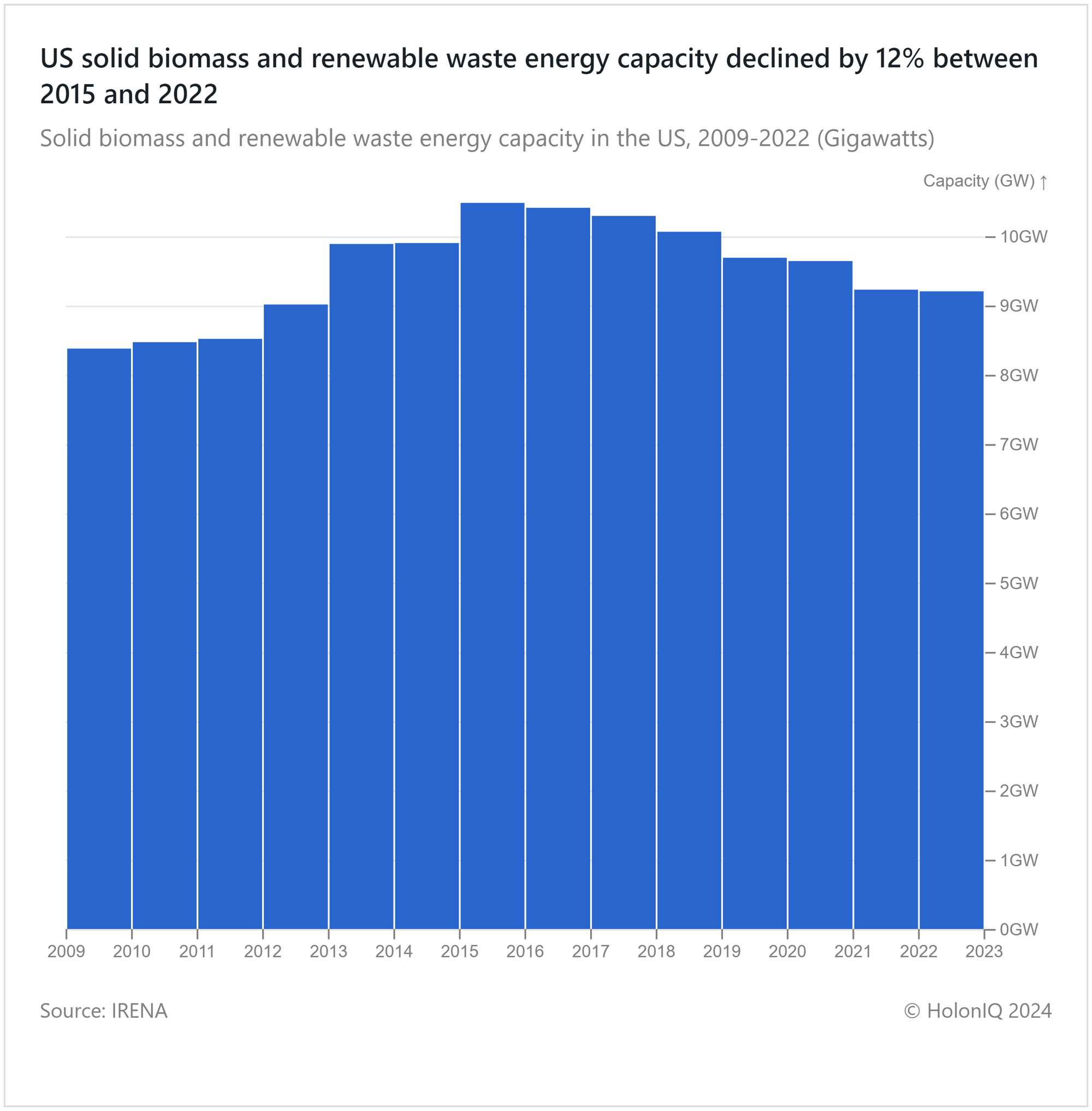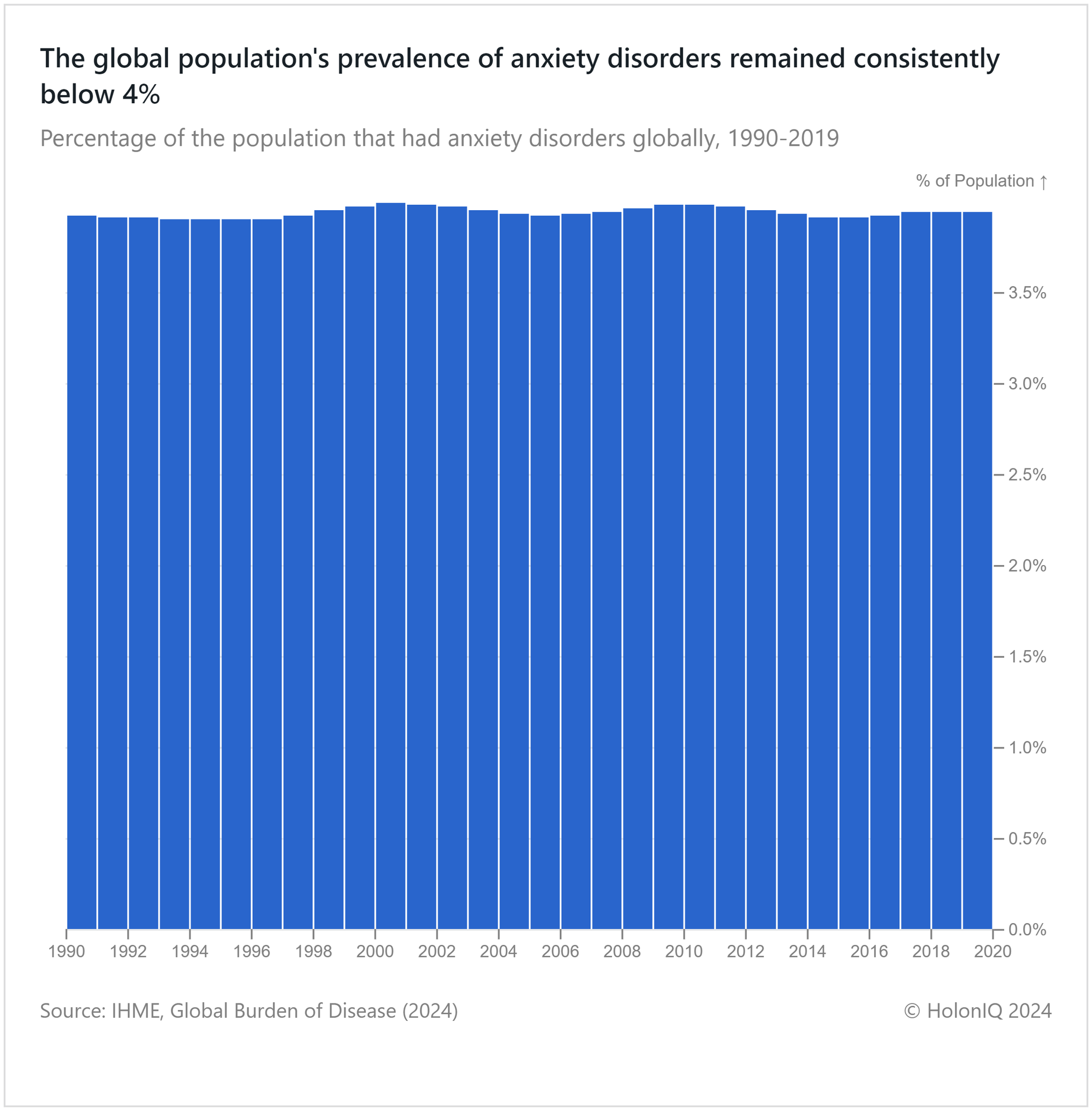🍃 US Biomass & Waste Energy Capacity Down 12%. Singapore's Primary Schools. 4% Anxiety Disorder Prevalence.
Chart of the Day #161 looks at Primary Schools, Renewable Capacity and Wellness
Xin chào 🍜
According to recent data, India added 12.2GW of new solar capacity in the first half of 2024, surpassing the total volume of capacity added in 2023. New solar capacity accounted for 44% of the 195GW of renewable power capacity in India. Singapore's Gifted Education Programme (GEP) will be revamped, allowing more students to participate in high-ability programs across all schools, benefiting around 10% of students.
Today's Topics
🏫 Primary Schools. Singapore’s primary schools more than halved between 1960 and 1990
🍃 Renewable Capacity. US biomass and renewable waste energy capacity fell by 12% from 2015 to 2022
🧠 Wellness. Global anxiety disorder prevalence at 4%
For unlimited access to over one million charts, request a demo.
🏫 Singapore’s Primary Schools More Than Halved Between 1960 and 1990

Between 1960 and 1990, the number of primary schools in Singapore decreased by more than half, due to urbanization and population policies that consolidated schools to maximize resources. Following this period, the number of schools stabilized at about 180 due to a stable population and well-planned education infrastructure, enabling constant access to primary education without the need for further downsizing.
🍃 US Biomass and Renewable Waste Energy Capacity Fell by 12% From 2015 to 2022

Solid biomass and renewable waste energy capacity in the US peaked in 2015, driven by strong investments in renewable energy. However, from 2015 to 2022, capacity declined by 12% due to a shift towards more efficient and cost-effective renewable sources like solar and wind, as well as reduced incentives for biomass and waste energy projects, leading to decreased capacity.
🧠 Global Anxiety Disorder Prevalence at 4%

From 1990 to 2019, the global prevalence of anxiety disorders consistently remained at around 4%, showing little fluctuation over the three decades. Despite global changes and increasing awareness of mental health issues, the proportion of the population affected by anxiety disorders has neither significantly increased nor decreased, reflecting persistent underlying factors contributing to these conditions worldwide.
Like getting this newsletter? For unlimited access to over one million charts, request a demo.
Thank you for reading. Have a great week ahead!
Have some feedback or want to sponsor this newsletter? Let us know at hello@holoniq.com
